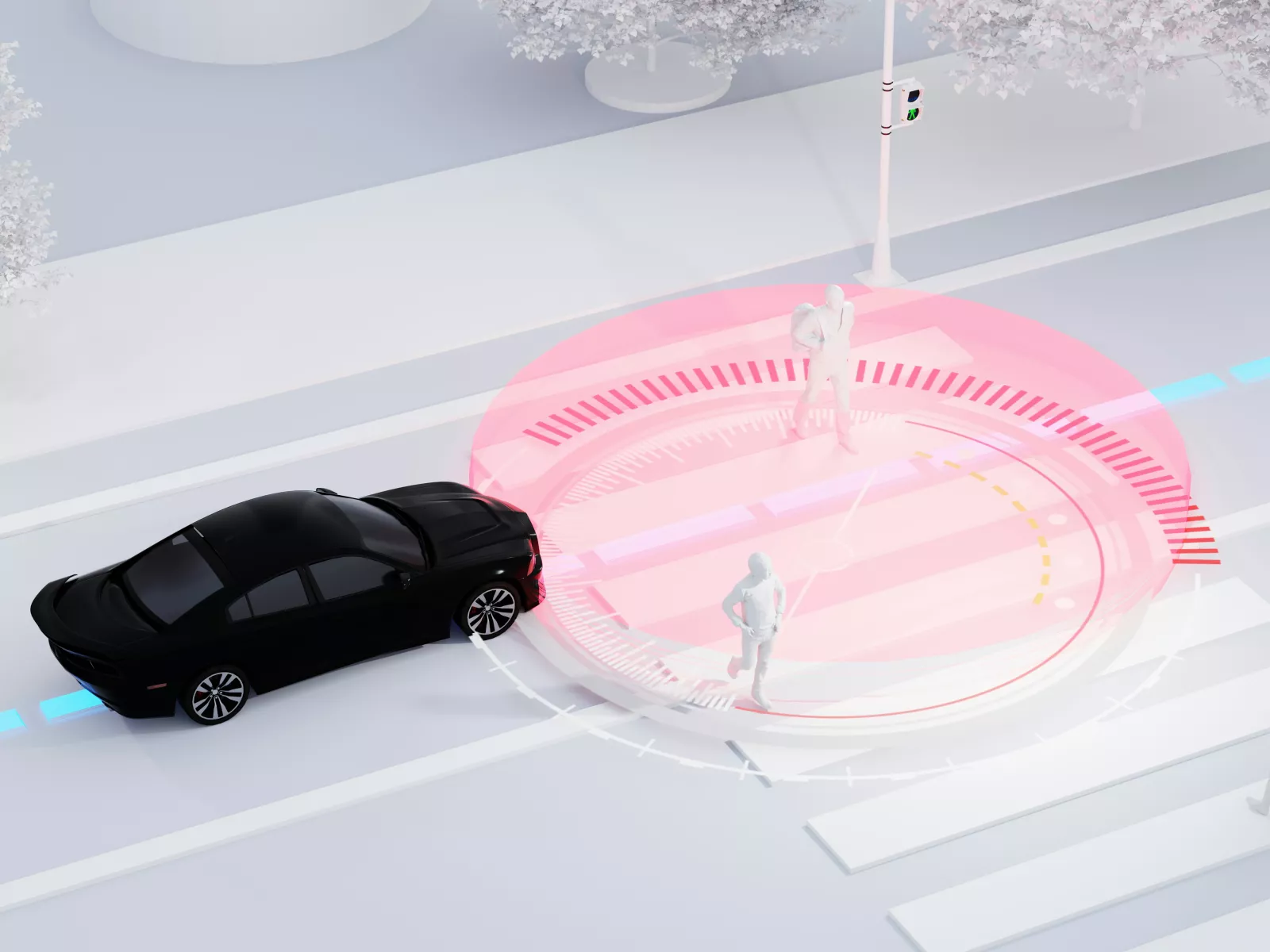
Every year, millions of road accidents occur worldwide and the vast majority of them – around 94% – are caused by human error. What if vehicles could anticipate risks and react faster than even the best drivers? HUN-REN SZTAKI SCL is working on this in collaboration with the world's leading technology and engineering companies.
The main cause of accidents is that drivers are distracted, make poor decisions and are often too slow to react to sudden dangers. This in turn causes congestion, fuel wastage and delays, in addition to pedestrian hit and runs and crashes.
Imagine an autonomous system that not only follows traffic rules, but is able to "anticipate" a pedestrian suddenly stepping out from behind a bus and adjust its route accordingly to avoid an accident before it happens. We hear more and more about self-driving cars, which are becoming more and more advanced, but adapting to real traffic situations and unpredictable human drivers is a much bigger challenge than most of us think.
Overcoming these obstacles requires innovative research, advanced algorithms and control systems that can cope with the diversity of the real world – this is what the Systems and Control Laboratory (SCL) at HUN-REN SZTAKI has been working on for more than 35 years.
Smarter traffic, safer roads
HUN-REN SZTAKI SCL is one of the leading research centers in the field of mathematical systems and control theory in Hungary. Among other things, the laboratory focuses on solving real-world transport challenges by developing artificial intelligence-based control algorithms that enable autonomous vehicles to better predict, react and learn in complex environments.
"Autonomous vehicles need to be able to navigate in a world that is still full of human drivers and unpredictable situations. Our research aims to create models that will allow self-driving cars to make safer decisions on the road," explains Prof. Péter Gáspár, head of SCL and the Autonomous Systems National Laboratory.
In the laboratory, situations that are too dangerous or simply impossible to test in real life are simulated and modelled. Just think of how a self-driving car can be taught to react appropriately to a pedestrian suddenly stepping onto the road – for example, a child jumping out from behind a parked bus. That's where SCL's special test track, the "AI MotionLab", comes into play, where models already proven in theory and computer simulations are put to the test using virtual reality (VR), augmented reality (AR) and mixed reality (MR). This will allow experts to create virtual pedestrians, cyclists or even unpredictable weather conditions that interact with real vehicles – miniaturized versions of the original ones. Digital elements behave just like real-world hazards, allowing engineers to test the responses of an autonomous system in a safe, repeatable and cost-effective way.
This approach is particularly important in teaching how to deal with rare but critical situations. SCL researchers not only rely on real-world data, but also virtually generate and simulate these extreme situations, allowing self-driving systems to learn faster and become more reliable before being deployed on public roads.
By combining advanced modelling and real-world testing, SCL not only makes autonomous vehicles safer, but also speeds up their development while minimizing risks. This innovative approach is the reason why domestic and foreign technology and engineering companies sometimes turn to the Hungarian research lab for development proposals. In this way, SCL can actively shape the future of smart mobility together with market players.
Beyond mobility
SCL's work goes beyond autonomous cars. The research laboratory also focuses on broader transport efficiency, vehicle connectivity, and safety-critical control systems used in aviation, rail networks, and industrial energy solutions.
"We are working on fundamental research that will directly influence the future of mobility. Our algorithms not only help individual cars drive better, but also contribute to the redesign of entire transportation systems to make them safer, more efficient, and more sustainable," added Prof. Gáspár.
Although self-driving cars have not yet flooded our cities, Hungarian experts working at HUN-REN SZTAKI SCL are paving the way for a future in which autonomous vehicles are safer, smarter, and better prepared for unpredictable driving situations.
The above press release has received more than 60 online publications in Hungarian professional and other media, such as trademagazin.hu, infovilag.hu, gyartastrend.hu, autoszektor.hu, digitalhungary.hu, autopro.hu, adozona.hu, iparicegek.hu, profitline.hu, iotmagazin.hu, ictglobal.hu.